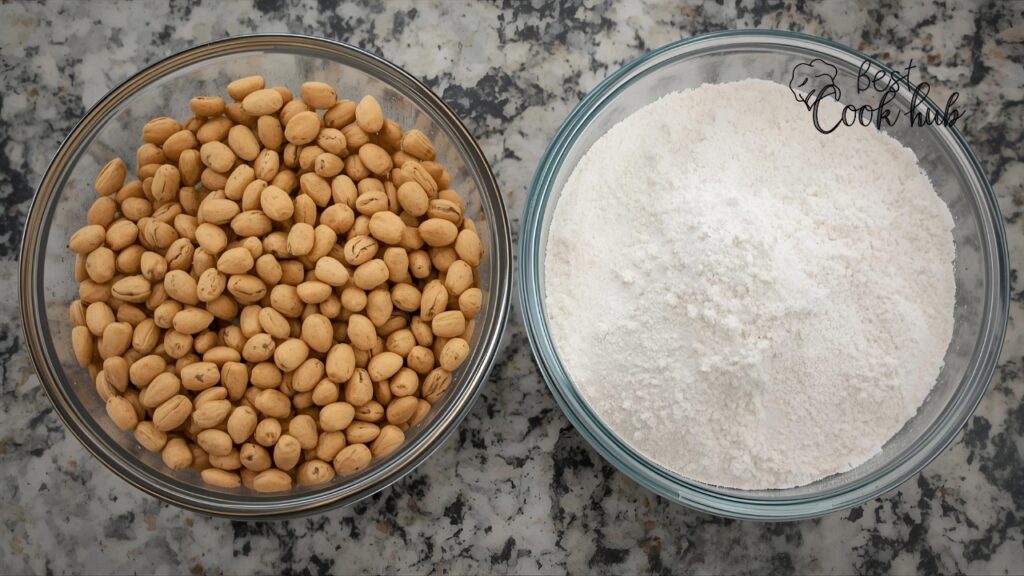
Wheat flour is a kitchen staple. It’s in bread, pasta, pizza, pancakes, and so many everyday foods. But if you’ve ever milled your own flour or thought about it, one question often comes up: “How many wheat berries do I need to make a cup of flour?”
This isn’t just a random kitchen curiosity. Getting this right can save money, time, and reduce food waste. It’s also a big step toward more control over what you eat. Let’s break it down step by step using real numbers and a practical approach.
Problem: The Confusion About Wheat Berries and Flour
Many people assume that 1 cup of wheat berries equals 1 cup of flour. It sounds logical, right? But in reality, wheat berries and flour don’t measure the same by volume.
Why?
Because wheat berries are dense and whole. When ground into flour, they expand in volume and trap air. This is what causes a mismatch between weight and cup measurement.
Example:
If you pour 1 cup of wheat berries into a grinder, you don’t get exactly 1 cup of flour. You get more — sometimes up to 1½ cups. This small difference can mess up baking recipes, especially bread or pastries where precision matters.
So, how much exactly do you need? Let’s look at the numbers.
Agitate: Why This Small Measurement Error Matters
Let’s say you’re baking a loaf of bread.
A standard recipe might call for 3 cups of whole wheat flour. If you assume 3 cups of wheat berries equals 3 cups of flour, you’ll end up with too much flour.
What happens then?
- The dough becomes dense instead of elastic.
- The loaf rises poorly.
- The texture gets heavy and chewy.
- And you’ve wasted extra wheat and effort.
This also affects cost. If you mill your own flour regularly, even small miscalculations can add up over weeks or months. It can also impact nutrition tracking — important if you’re managing calories or specific diets.
Bakers, homesteaders, and home cooks all face this. Even experienced ones make this error when they first switch from store-bought flour to fresh-milled.
But don’t worry. Once you understand the weight-to-volume relationship, it’s easy to get right every time.
Solution: Exact Ratio of Wheat Berries to Flour
How Much Wheat Berries to Make One Cup of Flour?
The general rule of thumb is:
1 cup of wheat berries = 1.5 cups of flour (approximately)
This comes from real milling data. A cup of hard red wheat berries weighs around 180 grams. When ground, it yields about 240–250 grams of flour by volume.
Why the difference? Grinding adds air space between the particles, making flour less dense by volume. The weight doesn’t increase, but the volume does.
Quick Reference Table
| Wheat Berries | Approx. Weight | Flour Yield (Cups) | Flour Weight |
|---|---|---|---|
| 1 cup | 180 g | 1.5 cups | 240–250 g |
| 2 cups | 360 g | 3 cups | 480–500 g |
| 3 cups | 540 g | 4.5 cups | 720–750 g |
This ratio holds for most wheat varieties — hard red, hard white, and soft white wheat. Some minor differences may occur due to moisture content and milling fineness.
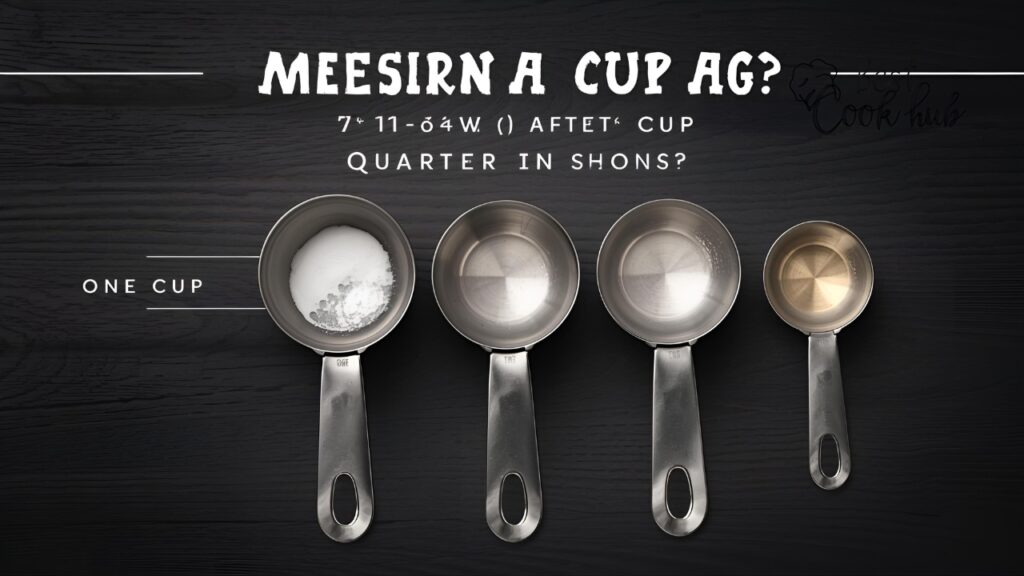
Case Study: Real Milling Test
To make this more than just numbers, let’s look at an actual test done by a small homestead bakery in the Midwest, USA.
Test Setup:
- Type of wheat: Hard Red Spring Wheat
- Milling method: Electric grain mill (fine setting)
- Tools: Digital kitchen scale, measuring cups, airtight container
Steps Taken:
- Measured 1 cup of hard red wheat berries.
- Recorded weight: 180 grams.
- Ground the berries into fine flour.
- Measured the resulting flour volume.
- Recorded volume: 1.48 cups.
- Weighed the flour: 179 grams.
Result:
The weight stayed nearly the same. But the volume increased by 48%. This confirmed that 1 cup of wheat berries yields about 1.5 cups of flour.
This case study shows why you should always weigh ingredients when milling your own flour. Volume is useful for quick reference, but weight is precise.
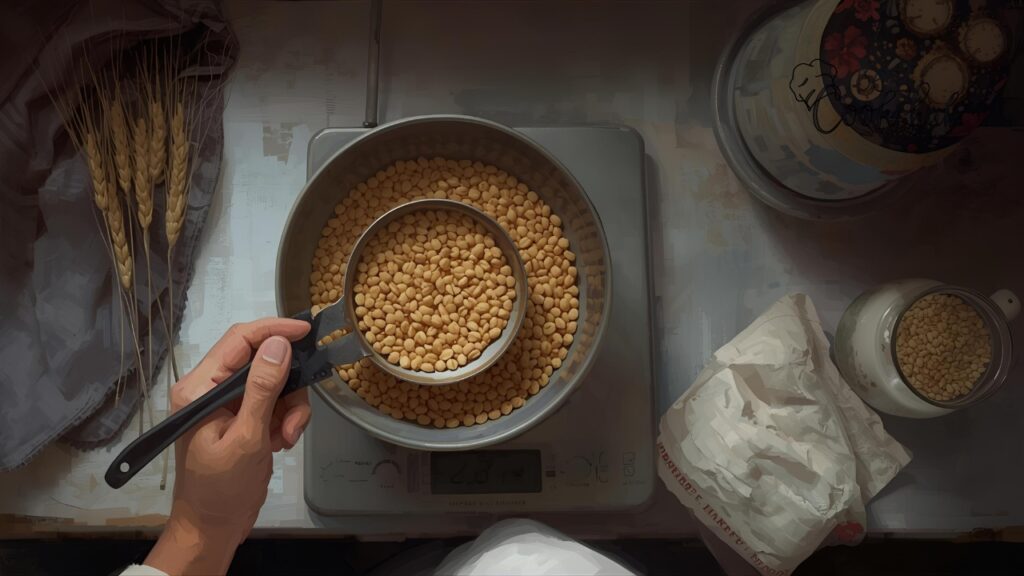
Understanding Why Volume Expands
Volume expansion isn’t magic. Here’s why it happens:
- Grinding breaks the wheat kernel into tiny particles.
- Those particles trap air between them.
- Flour is fluffy, not compact like whole berries.
- This makes the same weight occupy more space.
Think of it like this: 1 cup of sugar cubes takes up less space than 1 cup of crushed sugar. Same weight, more volume.
Different Types of Wheat, Different Yields
Not all wheat is the same. The type of wheat affects how much flour you get per cup of berries.
| Wheat Type | Cup of Berries (g) | Flour Yield (cups) | Notes |
|---|---|---|---|
| Hard Red Wheat | 180 g | 1.48–1.5 cups | High protein, great for bread |
| Hard White Wheat | 175 g | 1.45–1.48 cups | Softer crust, milder flavor |
| Soft White Wheat | 165 g | 1.4–1.45 cups | Good for pastries and cakes |
| Spelt | 160 g | 1.35–1.4 cups | Slightly lower yield, delicate grain |
| Einkorn | 155 g | 1.3–1.35 cups | Ancient grain, light flour |
If you’re baking something specific, choosing the right wheat type helps you predict yield more accurately. For example, bread bakers usually prefer hard red or hard white, while pastry bakers may use soft white or spelt.
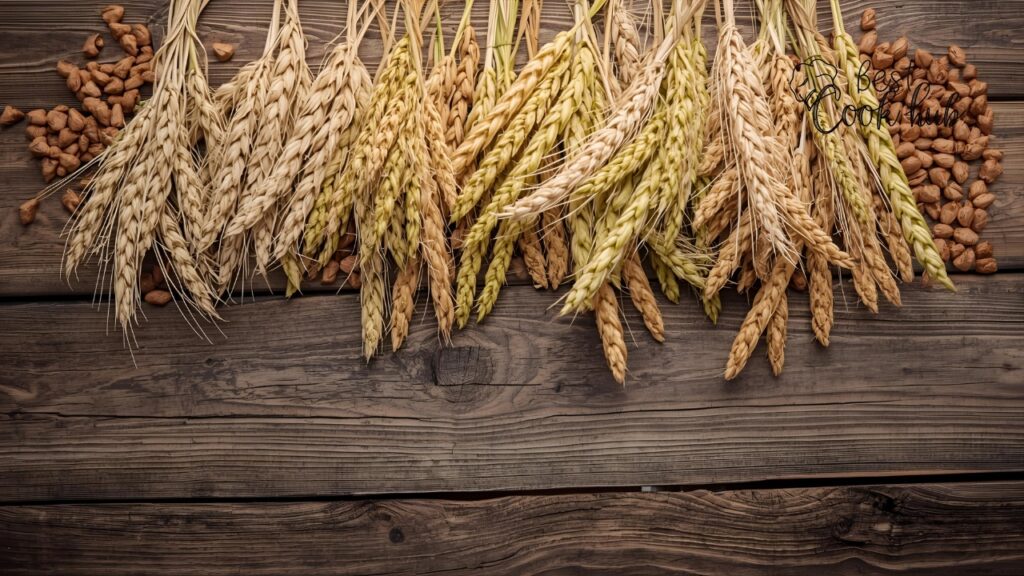
Practical Example: Planning Your Flour
Let’s say you want to bake 6 cups of flour worth of bread. How much wheat berries should you grind?
- Flour needed: 6 cups
- Conversion: 1 cup wheat berries ≈ 1.5 cups flour
- Calculation: 6 ÷ 1.5 = 4 cups wheat berries
So, you should grind 4 cups of wheat berries to get about 6 cups of flour.
Weight calculation:
4 cups × 180 g per cup = 720 grams of wheat berries.
This is a simple formula that can save you from grinding too much or too little.
Milling Tips to Maximize Yield
Here are practical steps to get consistent flour volume:
1. Use a digital scale.
Weight is more reliable than cup measurements. Always measure your wheat berries before grinding.
2. Keep moisture content stable.
Wheat with high moisture can yield slightly less flour. Store wheat berries in a cool, dry place.
3. Grind in small batches.
Grinding large amounts at once can generate heat, which can affect flour quality.
4. Use a fine setting.
Finer flour increases volume slightly more than coarse flour.
5. Sift if needed.
Sifting can separate bran and increase fluffiness. But this can also reduce the total weight of the flour left behind.
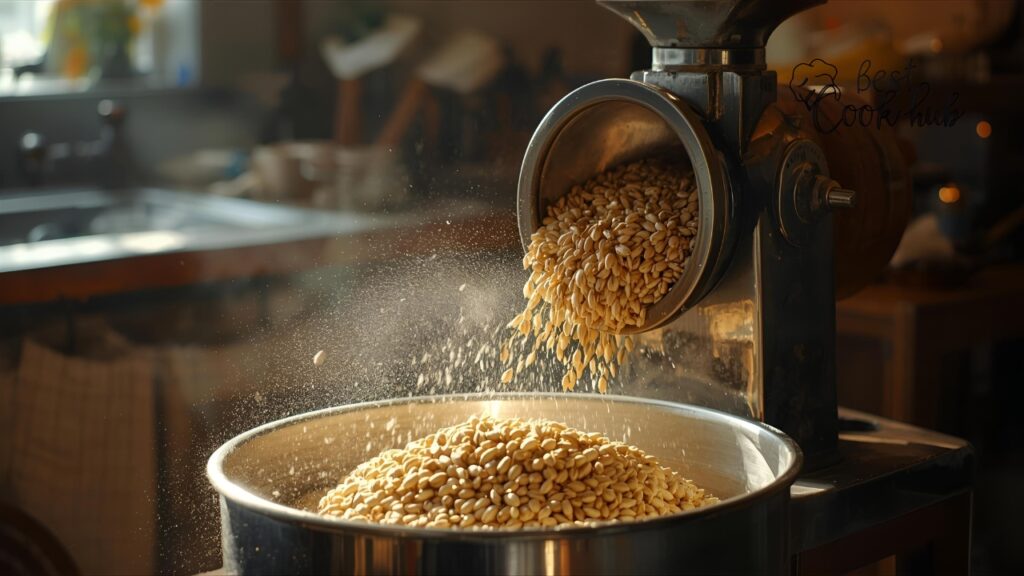
Nutritional Value Remains the Same
It’s important to understand that volume change doesn’t mean nutrition change.
180 grams of wheat berries contain the same nutrients whether whole or ground.
This includes:
- Calories: ~600 kcal
- Protein: ~22 grams
- Fiber: ~24 grams
- Carbs: ~120 grams
Grinding doesn’t add or remove nutrients. It just changes the structure.
This is one of the main reasons why many people prefer milling at home. Fresh flour retains its natural oils, fiber, and flavor.
How to Store Wheat Berries and Fresh Flour
If you mill in advance, storage is key to freshness.
For Wheat Berries:
- Store in airtight containers.
- Keep in a cool, dark place.
- Can last up to 6–12 months.
For Freshly Milled Flour:
- Store in airtight containers.
- Keep in the fridge or freezer if not used in 1–2 days.
- Fresh flour contains natural oils and can go rancid faster than commercial flour.
Tip: Label the container with the date of milling.
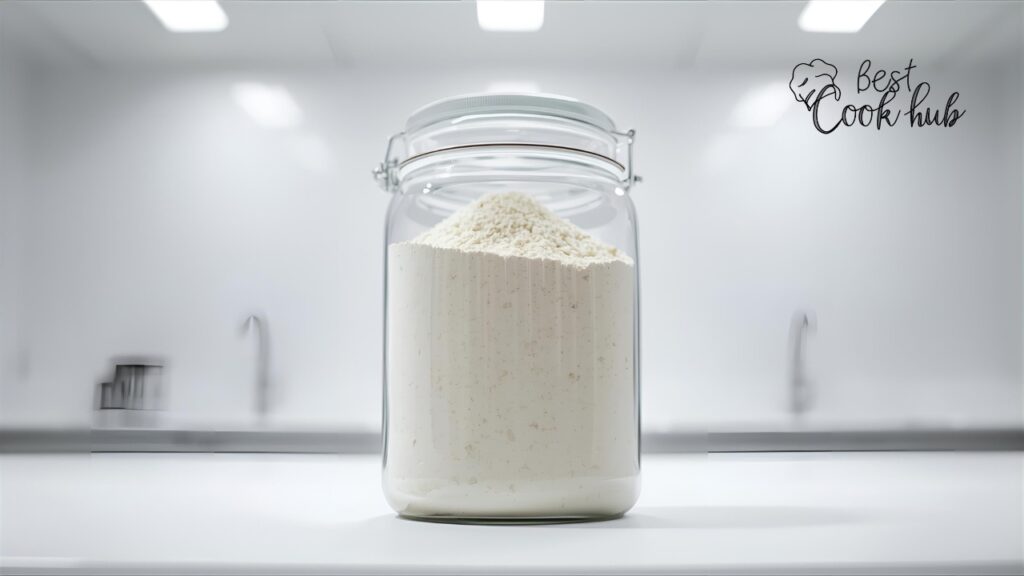
Cost Comparison: Buying vs. Milling
Let’s look at a quick cost breakdown using real numbers from U.S. bulk suppliers (2024 average):
| Product | Price per lb | Weight per cup | Cost per cup of flour |
|---|---|---|---|
| Whole wheat berries | $1.20 | 0.40 lb | $0.48 |
| Whole wheat flour (bag) | $1.60 | 0.33 lb | $0.53 |
While the cost difference may seem small per cup, over 50 pounds of flour, the savings are clear. Plus, freshly milled flour offers higher nutritional value.
Why Weighing Is Better Than Measuring by Cups
Cup measurements are convenient, but they vary. Factors like how you scoop, the humidity, or how fine the flour is can change the measurement.
Using a digital kitchen scale ensures consistency and accuracy every time. Professional bakers rely on weight for this reason.
Conversion Cheat Sheet
Here’s a simple chart to keep in your kitchen:
| Flour Needed | Wheat Berries to Grind | Weight of Berries |
|---|---|---|
| 1 cup | 0.67 cup | 120 g |
| 2 cups | 1.33 cups | 240 g |
| 3 cups | 2 cups | 360 g |
| 4 cups | 2.67 cups | 480 g |
| 5 cups | 3.33 cups | 600 g |
| 6 cups | 4 cups | 720 g |
Common Mistakes When Measuring Wheat and Flour
- Measuring berries and flour 1:1
→ This causes extra flour and recipe imbalance. - Skipping the scale
→ Inconsistent results, especially in bread recipes. - Grinding too much at once
→ Flour gets hot, moisture escapes, yield may change slightly. - Not accounting for sifting
→ If you sift out bran, your flour weight will be less than the berries used. - Using cups instead of grams for big batches
→ Small errors add up fast.
Milling Methods and Yield Differences
There are several ways to grind wheat berries. Your method affects the yield slightly.
| Milling Method | Yield per cup | Notes |
|---|---|---|
| Electric Grain Mill | 1.48–1.5 cups | Fast and consistent |
| Manual Hand Mill | 1.45 cups | Requires more effort |
| Blender / Food Processor | 1.4 cups | Less consistent, may overheat |
| Stone Mill | 1.48–1.5 cups | Gentle and fine |
If you plan to mill regularly, investing in a quality electric grain mill saves time and ensures a consistent flour texture.
Real-Life Scenario: Home Baker Planning
Maria, a home baker, bakes 4 loaves of bread each week. Each loaf requires 4 cups of flour.
- Total flour needed: 16 cups
- Conversion: 16 ÷ 1.5 = 10.67 cups wheat berries
- Round up: 11 cups of wheat berries
She weighs out:
11 cups × 180 g = 1,980 grams of wheat berries.
She grinds once a week and stores flour in an airtight container. This saves her about $1.50 per week and gives her bread a fresher, richer flavor.
Pro Tip: Always Note Your Own Ratios
Every kitchen is different.
- Your wheat variety
- Your grinder
- Your measuring cup
All can cause small variations.
Keep a simple log of how much wheat you use and how much flour it yields. After a few tries, you’ll know your exact ratio.
Environment and Sustainability Impact
Milling at home isn’t just practical. It also has environmental benefits:
- Less packaging waste (no plastic flour bags)
- Longer shelf life of wheat berries
- Less spoilage over time
- Reduced transport weight (berries are more compact)
This small shift can lower your kitchen’s carbon footprint.
Final Thoughts: Simple Math for Consistent Results
To sum it up:
- 1 cup of wheat berries = 1.5 cups of flour (approx.)
- 1 cup of wheat berries weighs ~180 grams
- Always weigh for accuracy
- Plan your baking in advance
This simple ratio helps you bake better, save money, and enjoy fresher flour.
FAQs
About two-thirds of a cup of wheat berries (around 120 grams) makes 1 cup of flour.
1 pound (454 grams) of wheat berries yields about 3 cups of flour.
Yes. Sifting can reduce flour weight by 5–15% depending on how much bran is removed.
In an airtight container in a cool, dark place. Properly stored, they can last up to a year or more.
You can, but for best freshness, mill just before use. If milling ahead, store in the fridge or freezer.
Hard red and hard white wheat typically yield the most flour per cup of berries.